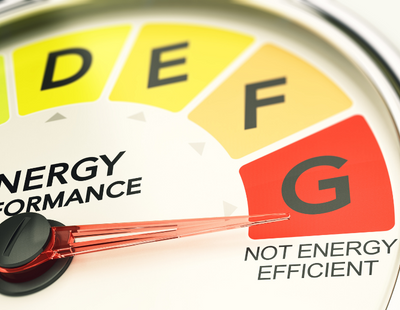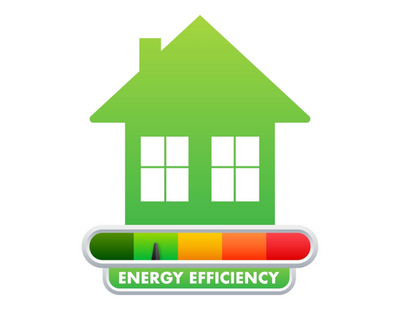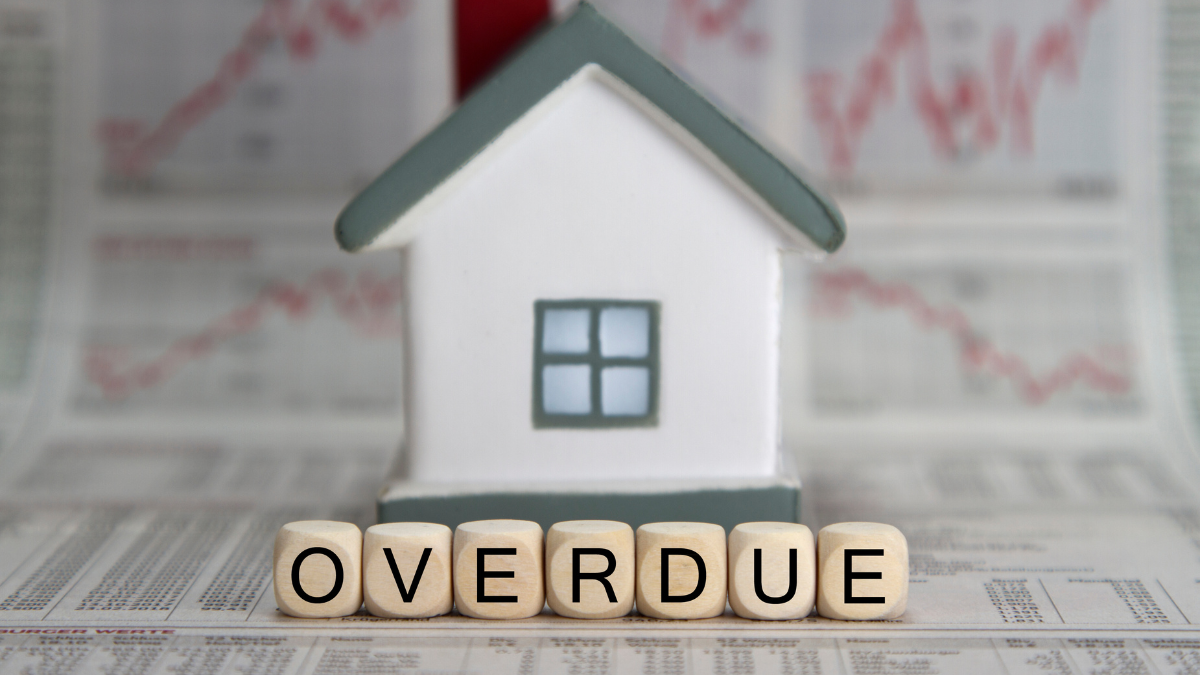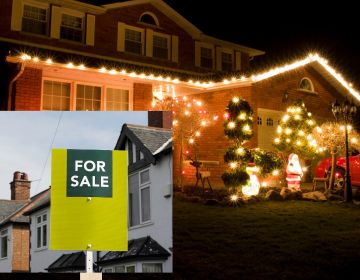Homes account for almost a quarter of the UK’s total carbon emissions, and - according to PNZ - represent the biggest barrier to reaching net zero by 2050 without retrofit intervention.
Nearly 700,000 homes in England and Wales fall into the highest percentiles of domestic emissions, which are broadly equivalent to EPC ratings of F or G, the two lowest bands for energy efficiency.
These homes emit over 100kg of carbon dioxide per square metre, annually, compared with the average home’s 40kg.
But the PNZ Group’s analysis reveals a North / South divide developing when it comes to tackling high-emissions dwellings.
In the North East, the North West, and Yorkshire and the Humber, 3.1 per cent of homes in 2023 were recorded as ‘high-emissions homes’.
This number stands barely unchanged from 3.4 per cent of northern homes in 2010, showing a glacial pace of decarbonising the most carbon intensive houses.
Of all English and Welsh regions, the North East has the longest road to decarbonising its high-emissions homes, with no change at all in the proportion of these environmentally taxing homes in the last 13 years - from 2.37 per cent of homes in 2010 to 2.37 per cent in 2023.
The PNZ Group’s data reveals the North West and Yorkshire as having made the second- and third-slowest progress on carbon intensive homes, with a less than 0.5 per cent reduction in high-emissions homes since 2010.
Overall, nearly 220,000 high-emissions homes remain in the North of England, which will need to be reduced to 0 to meet the UK’s net zero target.
In contrast to England’s North, the number of high-emissions homes in the South of England and in Wales is dropping steadily - PNZ says this is the result of concerted interventions to make homes greener, through heat pumps, double glazing, or solar panel installation.
Despite having the highest proportion of emissions-intensive homes of all regions in 2010 at 6.5 per cent, the South West has made the most progress on its domestic emissions, with that proportion dropping to 3.7 per cent in 2023.
Eden in the North West is the local authority with the most energy intensive homes in England and Wales – a staggering 16 per cent of homes emit over 100kg of carbon dioxide per square metre in 2023 compared to the national average of 2.8 per cent.
This is an increase of the number of high-emissions homes on 2010, when 11 per cent of homes were considered energy-intensive.
In fact, over a tenth local authorities in England and Wales are seeing the number of high-emissions homes climb since 2010. Of the 36 local authorities where high-emissions homes are increasing in number, 25 are located in the North of England.
PNZ co-founder Simon Turek says: “Our data analysis tells the story of a huge regional divide in improving the UK’s housing stock, where Northern England has been left behind.
“Making UK homes - particularly the most carbon intensive - more energy efficient is a huge hurdle to reaching net zero emissions by 2050. Government retrofitting schemes cover some ground, but the scale of funding needed to green our homes means we need private sector investment too.”
Want to comment on this story? Our focus is on providing a platform for you to share your insights and views and we welcome contributions.
If any post is considered to victimise, harass, degrade or intimidate an individual or group of individuals, then the post may be deleted and the individual immediately banned from posting in future.
Please help us by reporting comments you consider to be unduly offensive so we can review and take action if necessary. Thank you.
















.jpg)











.png)






Join the conversation
Jump to latest comment and add your reply
Aren't houses in the South West worth considerably more than houses in the North East?
Don't decarbonising measures cost pretty much the same all over the country?
Even though yields may be higher in the NE in general much smaller numbers are in play. For the cost of one house in Bath, Bristol or Exeter you could buy half a street in parts of County Durham.
In the SW spending £20K on upgrades may make sense in terms of increasing the value of the house by at least a corresponding amount. In the NE it's far less likely to be able to recoup a similar cost.
Then there's financing these upgrades. There's far more likelihood of having sufficient equity for a further advance in the SW.
Totally agree with that, Jo.
The common sense solution is to gradually upgrade our PRS stock as units become vacant and proper refurbishments are possible:
1. Get draft predicted EPCs from a good local energy assessor showing a refurb that delivers both a Running Cost EPC of Grade C AND a CO2 Pollution EPC of Grade C. As we all know, the now fit-for-purpose and accurate domestic EPCs show TWO Grades that are measuring quite different things. Some lenders now want EPCs showing both Running Cost Grade C and CO2 Pollution Grade C.
2. Install 5cm sheet of Celotex on the inside of external facing walls and plaster.
3. Install 5cm sheet of Celotex on ceilings and plaster.
4. Fit LED light bulbs in all fittings.
5. Install two layers of Rockwool (one at rightangles to the other) in the loft.
6. Install Octopus Energy Cosy 6 electric heat pump to power-up existing wet rads. Using the Government's generous £7,500 boiler replacement 'tax refund'
7. Put a Govee thermometer is each room.
8. Install a Nuaire Drimaster Heat PIV ventilation unit in the Hallway.
9. Install a Windowskin over any draughty windows.
This is how we upgraded all UK homes to a fitted kitchen. This is how we upgraded all UK homes to mains electricity. This is how we upgraded all UK homes to an inside toilet and fitted bathroom.
It's really not difficult.
None of the above is required in owner occupied houses of course and it isn't a major problem.
Jo, as usual you've hit the nail on the head with your comment. A 20k upgrade in the north is over 3 years worth of rent and a 1/4 of the value of the house
I've always done what is economically possible to upgrade our houses when we buy them. All are currently a C or a D.
If/when they bring in EPC C I will be selling a few as due to construction type, it is not economically affordable to upgrade them to a C. Selling them and putting the money in the bank/ bonds, etc would bring in more income.
Maybe the government will use our tax money to pay for owner occupiers to upgrade them. If they want to pay to have mine done, I would let them.
Paging mr Osborne , where is he when he’s needed ?
As far as Government is concerned Landlords are loaded and is a requirement when Applying for a Licence. It’s one of the Questions on every Licence Application ‘ HAVE YOU GOT SUFFICIENT FUNDS’ you have to answer yes or I doubt your Application will be successful.
Same old green nonsense 🫣🫣 which targets the PRS, but leaves the SRS and home owners alone 🤔🤔
Given that energy efficiency measures in general become part of the fabric of a house and therefore are permanent, if any new houses are being built, I don't see how the percentage of high carbon houses can be going up unless new houses are being built that way ot the goalposts are changing.
Another consideration are the councils refusing planning permission for double glazing because it’s a grade 2 listed building, even in exactly the same style. I kid you not! Unbelievable. Calderdale Council, hang your hypocritical head in shame!
I have just replaced the windows in my farmhouse for the third time, as the previous two sets have rotted, even though they had been repainted regularly.
I have replaced them with Timberlook Heritage windows, which are UPVC.
My listed barn however on the same site, still has wooden windows and I would like to change them. but I can't as it wouldn't be allowed, so I have to constantly maintain them to prevent their becoming rotten.
I have the same problem with one property in a conservation area where I had to pay for planning permission to replace the rear wooden sash windows with UPVC but they insist on still having wooden windows on the front of the house.
There are 2 wooden sash windows with 16 panes each and two with 12 panes each. They are still the original single glazed sash windows with cords and weights and it takes several days to repaint them, which on a property around 50 yards from the North Sea in Central Scotland needs done far too often and costs far too much!
This green nonsense is just a con. Any excuse to extract more money from people.
Maybe I have just skim read this wrong, but isn't it talking about all homes and not just prs?
No government will force owner occupiers to waste money on better EPC's as too many votes at risk but landlords are easy targets.
Only 3.1% of homes are high emission so nearly 97% are efficient.
Britain has about 1% of global emissions, about 25% of which is from homes and 3.1% of these need attention.
0.01×0.25×0.031 is quite a small percentage of global emissions.
Why not talk to China, India and the USA before bothering UK home owners and landlords?
I read this item twice just to confirm that the PRS is not the main target as Robert has stated. It is all properties including private owners, council and housing associations etc. A lot of landlords have done as much as they can to improve the emiisions from properties so why are we worrying here. Move on people!
Crossing that Atlantic one way in a economy class seat burns more fuel than an average family car in one year, so 2 years of fuel on a return journey. Jet fuel is untaxed could that be because the airline / travel industry has such a strong political lobby here and overseas.
need to look at the proportion of of global airline fuel emissions in comparison to housing.
We should ban Americans from crossing the Atlantic, saving the planet and our sanity at the same time!
James my friend what hot air and nonsense would that be if it was unimportant and didn’t matter thousands of landlords wouldn’t have sold up, I wouldn’t have property idle for the first time in 45 years while people sleep on the Streets do you think we are enjoying this. I suppose you are fully Compliant ?
Why would Government be hell bent on getting rid of it if it didn’t matter .
So it took you 5 days to manage this stupid comment.
Michael
I think you've posted this in the wrong place?
Probably that phone of yours again!
Mine also has a mind of its own, often wrongly changing its to it's and making me look stupid!
Please login to comment